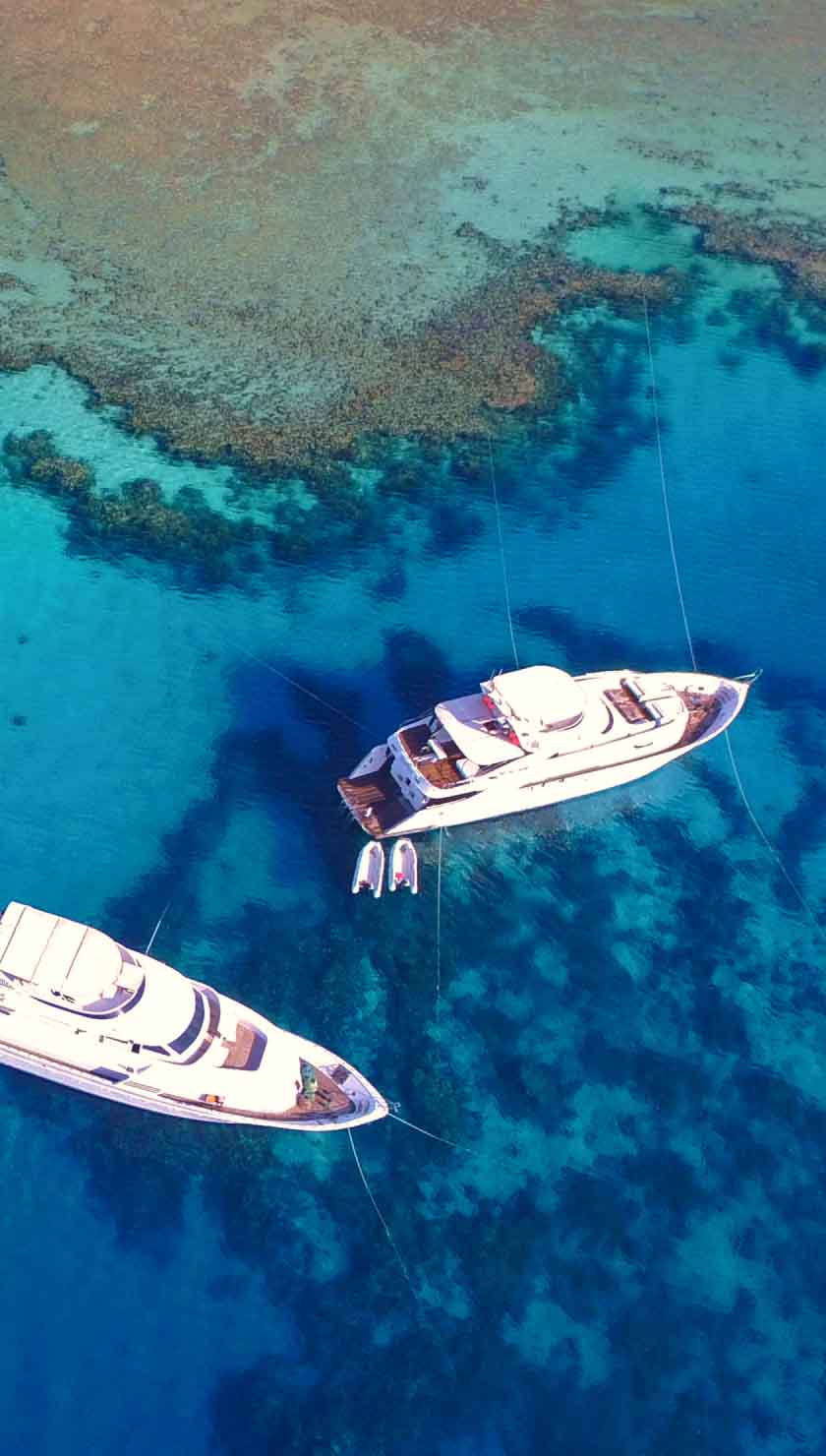What To Expect On A Bali Liveaboard
Liveaboards in Bali offer dive cruises to nearby hotspot dive areas such as Komodo & Lombok. Bali is perfect for liveaboard dive safari, which set sail from here as it has an easily accessible international airport. Numerous Indonesian liveaboards choose this amazing island as their departure point due to its close access to fantastic diving. The island remains unspoiled even after years of tourism, owing to the fantastic measures taken by the community to look after Bali. It's a popular tourist destination with ideal conditions for surfers, vibrant nightlife, ancient palaces, and some of the best diving sites in Indonesia. The National Marine Park introduced in 2010 around Bali's waters prohibits many destructive activities previously carried out by heavy industry and damaging fishing methods.
The island lies directly on a zone known as Wallace's Line, essentially a transitional zone where the two very different marine ecosystems of Asia and Australia meet. This gives Bali a richness in species diversity that is hardly seen anywhere else in the world. It is estimated that Nusa Penida alone, a neighboring island, supports an incredible 247 species of coral and 562 species of fish.
Bali Underwater
Bali is not only surrounded by many dive sites but also offers outstanding variation between sites too. The currents usually clear the waters, with Crystal Bay on Nusa Penida maintaining visibility of over 150 feet (45 m) on a good day. Monster manta rays and the largest bony fish species on the planet, the sunfish (also known as Mola mola) can be seen throughout the year in many of Bali's dive sites. Even whale sharks have been spotted at Mangrove, located on Nusa Lembongan, and a favorite of local divers.
Dive Sites Of Bali
Situated on the east coast of Bali, Tulamben Bay hosts some of the most famous dive sites in Indonesia, namely the wreck of USAT Liberty. The stunning bay, lined with black cliffs, is also where you will find one of the best muck dives in Bali, Seraya Secret. This fairly recently discovered site holds an abundance of small species, including some very rare specimens such as the pygmy seahorse and the ghost pipefish, perfect for the avid macro photographer and those with an appreciation for small critters. Mimic octopus, harlequin shrimp, and the strikingly patterned zebra crab can also be found here. Tulamben Bay is also popular for its wall dive at the Drop Off. Fantastic visibility and moderate currents provide an exhilarating drift dive along spectacular rocky features that create overhangs, harboring many interesting species.
The sheer density of life around the Liberty Ship Wreck is probably higher than at any other site along Tulamben Bay. USAT Liberty lies at a depth ranging from 25 to 100 feet (8 to 30 m), allowing even Open Water certified divers to get a good view of this magnificent wreck. Now enveloped in various hard and soft corals, she is frequented by several pelagic species, including blacktip reef sharks, oceanic whitetip sharks, giant trevallies, and barracuda. Schooling fish sometimes enjoy following you as you go through the wreck, while inquisitive garden eels poke their heads through the sandy patches around the site.
Nusa Lembongan is one of three islands to the southeast of Bali, only around 30 minutes away by ferry. Currents here tend to be slightly less than in Bali or Nusa Penida and perhaps give beginner divers more options in terms of sites. Lembongan Bay is a stunning shallow site with a maximum depth of 40 feet (12 m). Outcrops of sweeping table corals sit at the foot of large coral bommies. Banded shrimp, ghost pipefish, porcelain crabs, and emperor angelfish are just a handful of the species found here.
Nusa Penida is home to some very important sites, including Manta Point. This site is known as a cleaning station and is where enormous manta rays come to be rid of their parasites and are cleaned by certain species of fish, usually cleaner wrasse. In return, the wrasse gains an easy meal. Marble rays, as well as several species of shark, including nurse sharks, are very often seen here as well. The dive site SD is also popular on account of the excellent state of health the reef is in. Gigantic coral bommies create elaborate structures that provide security to many species of fish and invertebrates, while the banded sea snake glides in between the fields of branching corals.
Whilst Bali has fantastic diving in its own right, most Indonesian liveaboards departing from Bali will head towards dive areas such as Komodo National Park or Lombok, which offers divers excellent liveaboard itineraries.
Top Tips For Divers
Surrounding Bali are many dive sites that are suitable for all levels of certified scuba diver. However, most sites around Bali are subject to fairly strong currents that can be susceptible to shifting, sometimes without warning. These dive sites are generally best suited for a more experienced diver. As with any dive, it's a good idea to bring along an SMB and a finger spool to help ensure your location is marked for if you ascend somewhere slightly unexpected.
Many divers seek out sites with crystal clear waters and fantastic visibility but are sometimes unaware of the potential risk it poses, especially on wall dives. The lack of any reference coupled with strong currents and reef systems that descend to seemingly endless depths can cause some divers to become disorientated. It can be easy to misjudge depth. This is why it is important to maintain good buoyancy control while consistently checking your dive computer or depth gauge. As always, pay close attention to your guides, as they often warn of any risks during the dive briefing.
Getting To Bali
Ngurah Rai is the only international airport on the island of Bali. You'll find it on the southern coast in Denpasar, Bali's capital city. Although many airlines offer direct flights from several parts of the world, there are no direct flights traveling from Europe. Typically, connecting flights are caught at Bangkok or Kuala Lumpur, but also from Hong Kong, Dubai, or Singapore, depending on where you set off from.
Once you arrive in Bali, it is a short trip over the bay to Benoa Harbour, where most liveaboards depart. Most people rent a moped to move around Bali, but if you're arriving with all your luggage (or a moped is not your style), a car can also be arranged from one of the many rental companies operating within the airport.











